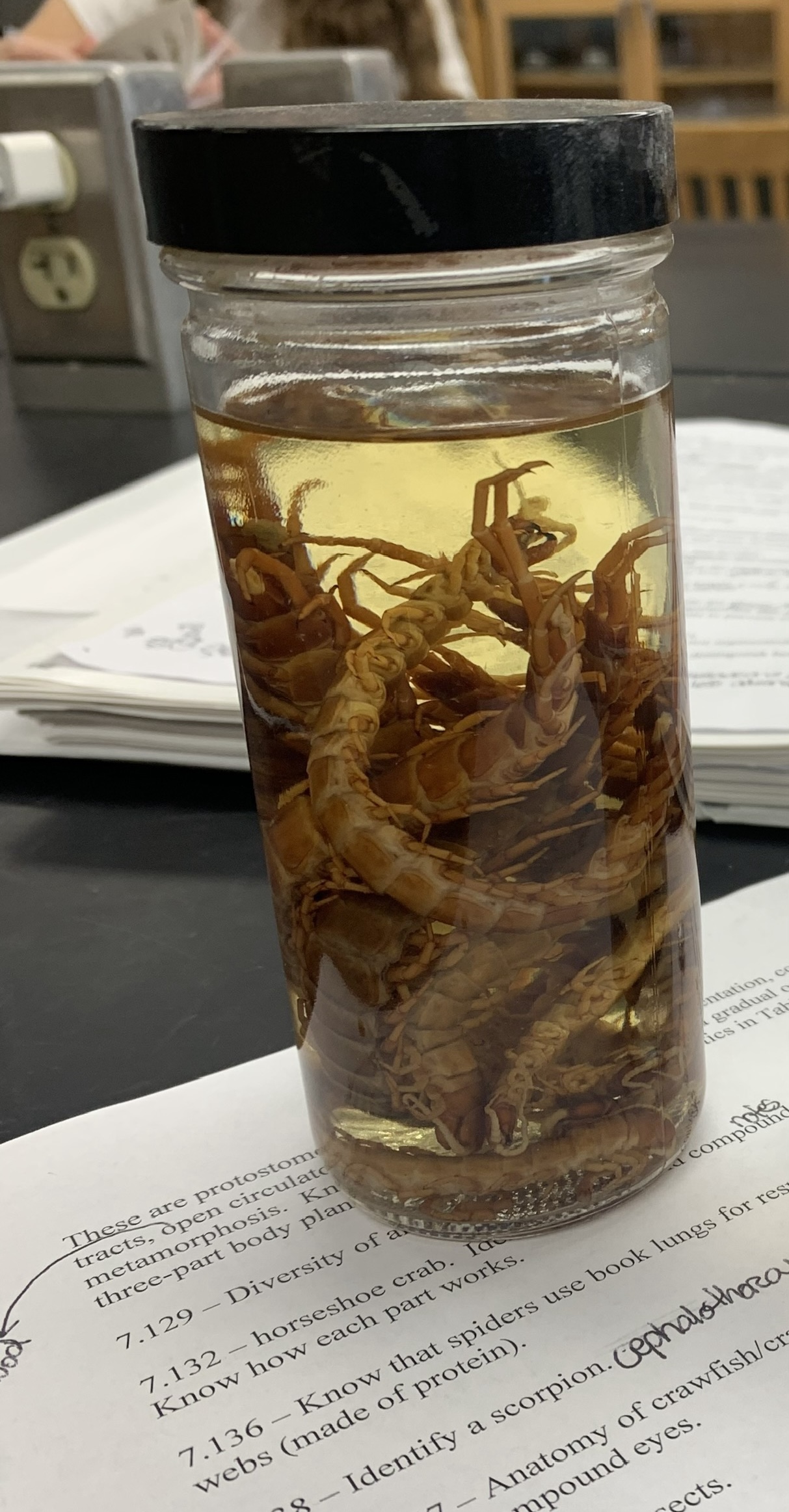Outline for Zoology-Invertebrates (4)
1/26
There's no tags or description
Looks like no tags are added yet.
Name | Mastery | Learn | Test | Matching | Spaced |
|---|
No study sessions yet.
27 Terms
To catch prey, spiders
spin webs of silk, sticky protein, to capture and immobilize prey through biting and secreting enzymes that liquify prey
Which is more threatening: smaller or larger scorpions?
Smaller
Ticks & mites are
parasites
Deer tick carries
lyme disease; special bacteria infects ticks for lyme disease; affects multiple organ systems
Picture of mites

Picture of scorpions

Crustacea
lobsters, shrimp, crabs, isopods (rollie pollies)
Scorpion
cephalothorax & stinging apparatus
Bodies of crustaceans
cephalothorax & abdomen; two pairs of antennae & pair of mandibles
Crayfish
abdomen, cephalothorax, carapace, 4 antennae, swimmerets, walking legs, & compound eye
Picture of crayfish

Swimmerets
move in sequence, starting at the back of the animal and moving forward
Carapace
protects cephalothorax & organs on crustaceans; made of chitin
Picture of shrimp

Picture of barnacles

Copepods & barnacles
sessile; attached & don’t move around as adults
Two pairs of wings
beetles, butterflies, bees, wasp
One pair of wings
flies, dragonflies
No wings
bugs, ants, grasshoppers
Insects
three part body plan, six legs, mandibles
Tracheae
multiple windpipes; openings are called spiracles on posterior end
Gradual/incomplete metamorphosis
egg, nymph (resemble smaller adults), adult; grasshoppers
Complete metamorphosis
egg, larva, pupa, & adult; butterfly
Pupa
dormant; sleep & develop into adult
Purpose of metamorphosis
diversifies diet & hides from prey
Centipede
hundred legged animal; carnivore

Millipede
thousand legged animal; herbivores; defense with hydrogen cyanide
